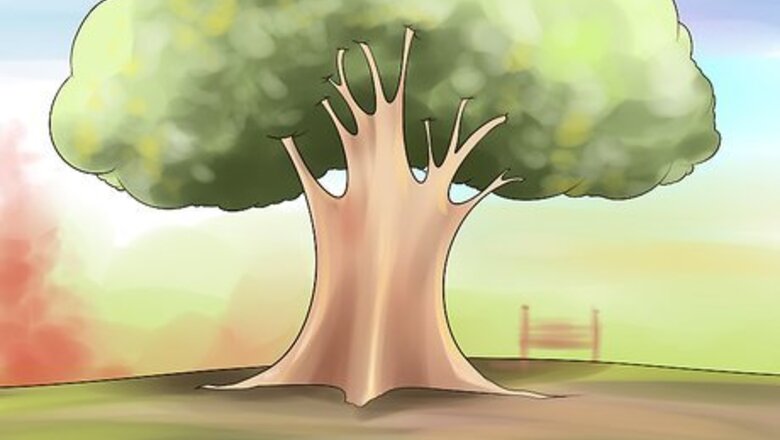
views
Understanding Coppicing
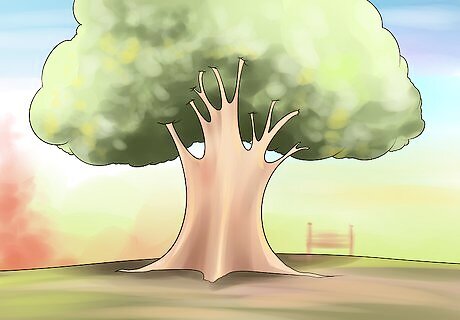
Choose the right species. Most broadleaf trees will sprout after coppicing, although species with good disease resistance are more likely to stay healthy. Most conifers (trees with needle leaves) will not regrow after coppicing. Some common and reliable coppicing trees include oak, ash, hazel, sweet chestnut, sycamore, willow, most alder species, and lime. The yew, monkey puzzle, and coast redwood can be coppiced despite being conifers. Beech, birch, wild cherry, Italian alder, and some poplar species are less desirable choices, either sprouting weakly or only sprouting while the stump is fairly small.
Start with young trees if possible. Younger trees are much more likely to grow back healthy and vigorous after severe pruning. You can attempt to coppice mature trees, but they are more likely to die, or to take two growing seasons to reshoot. Once a tree has been coppiced once, you can continue to coppice it indefinitely. In fact, a regularly coppiced tree tends to live much longer—hundreds or even thousands of years—than its untouched relative. This is because young growth is resistant to disease and age-related problems.

Determine the time between harvests. Coppicing is a flexible technique, since you can harvest the shoots at any size. Depending on the desired use or market demands, you may decide to harvest your shoots as stakes, posts of various sizes, or firewood. The following are rough guidelines only, based on typical uses of each wood: Hazel can produce bean sticks and similar products in 7–10 years. Sycamore and sweet chestnut trees can produce fence palings in 15 to 20 years. Oak and ash is often grown for 25–35 years before harvest, for round wood or firewood. In general, the longer and larger you plan to grow your trees, the more widely spaced you can plant them. (The stumps will continue to grow.)
Coppicing a Woodland

Cut trees in late winter or early spring. This is when the roots have the highest reserve of sugars and starch for new growth. It is possible to coppice later in spring or in early summer, but the results may be diminished. Don't leave it any later, or the cut bark and new shoots will not have time to harden before winter. Coppicing too late in spring also increases disturbance to flora and fauna. Shrubby dogwood and willow species will grow brightly coloured winter stems after coppicing. If this is your goal, cut these species back in spring, shortly after the new growth appears.
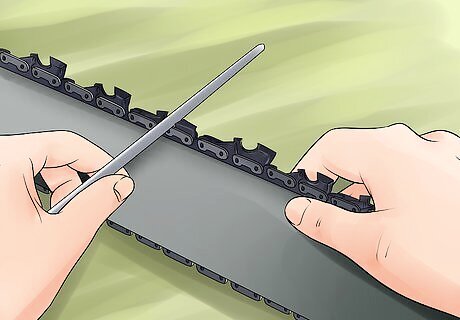
Sharpen and clean your cutting tools. You will need to make clean, even cuts that don't crack the bark, and you will need clean tools that won't spread disease from other trees. Chainsaws may lead to slightly reduced growth compared to axe cuts, but the small loss may be worth it for thick trunks. The most important factor in tool choice is the ability to make a clean cut. Make sure you know how to safely fell a tree before coppicing mature trees, or before clearing existing trees to make room for a coppice.

Leave a portion of the stump above the ground. There is disagreement over how low to cut the tree. Traditionally, cutting very low to the ground (say 3 cm / 1.2 in) is said to improve yield by encouraging new shoots to form their own root systems. In some studies, however, higher stumps (15 cm / 6 in +) produced more shoots and were less vulnerable to rot from ground moisture. The ideal height to cut likely depends on the species, and on the value of the cut timber. You may wish to experiment with different heights, or to seek local advice. You can instead pollard the tree, meaning cut it at a higher point on the trunk. The traditional purpose of pollarding is to keep shoots away from livestock. Today, it is sometimes used as a windbreak or for aesthetic reasons. Except for the height, pollarding is identical to coppicing.
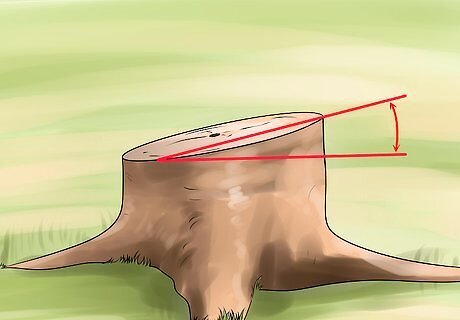
Slice the stumps at an angle to promote water runoff. This is a traditional technique for reducing rot and fungal disease. It's not clear how much of an effect this has, but it is an easy step to take. Aim for an angle around 15 to 20 degrees. Angle the cut to receive more sunlight so it dries more quickly after rain. (This is typically south-facing in the Northern Hemisphere.)
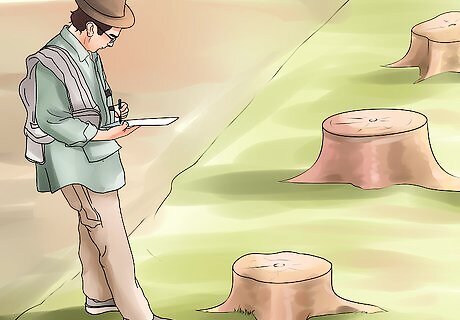
Decide whether to leave mature trees. Many growers leave some untouched trees or "standards" among the coppiced stools. This preserves some aesthetic and ecological aspects of the woodland. Ideally, the mature trees should be widely spaced (no more than 40% canopy cover), and include a variety of ages. The standards do not need to be the same species as the stools. Oak and ash are common standards, and often harvested for timber (on a much slower cycle than the coppice). Beech is not recommended due to its dense canopy. The alternative "simple coppice" system coppices all the trees in an area at the same time. This is most commonly used for sweet chestnut, a low maintenance tree that can reshoot indefinitely at the same rate.

Plan a rotation. Divide the woodland into sections, or "coupes", to coppice in a staggered rotation. By having each section at a different stage of growth, you provide a variety of habitats for different woodland species. This also allows for steady economic benefit, so the amount of wood you plan to use or sell each year factors into the size of your coupes.
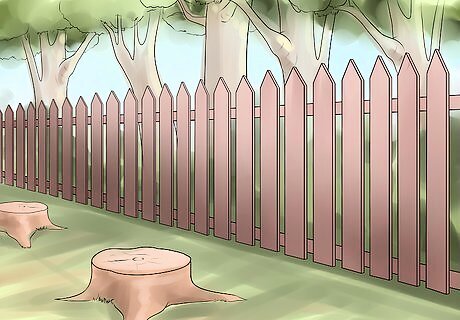
Fence the area that has just been cut. The shoots are tasty food for deer and other animals, so secure the area before spring. If the fence seems ineffective, you can cover the stools with plant debris or hedge clippings, but this may affect the shape of the new shoot growth. If animals become a problem, then you might want to try pollarding instead.
Harvesting Coppiced Shoots
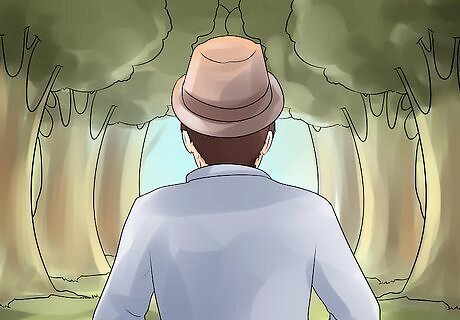
Return to harvest a coppiced section in late winter. However, keep in mind that this might not be for another 7 to 25 years after making the original cut. Harvest when the sap is down for highest quality wood and least damage to the tree.
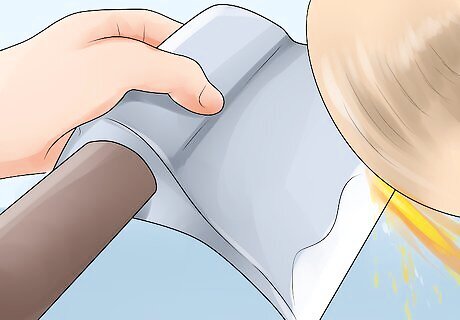
Sharpen your blades. For larger shoots, use a sharp axe. For smaller shoots, use a billhook or handsaw.
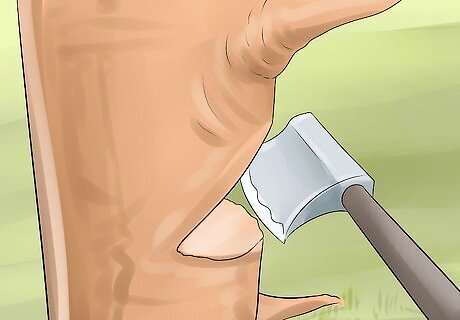
Cut the shoots at an angle close to their base. The lowest point of the cut should face outward, to promote rain runoff. Start at the outer shoots and work in toward the center, cutting close to the base of the shoot.

Season the wood by laying it to dry in a well ventilated area. Traditionally cut wood was stacked in a 'cord'. Small shoots can be adequately seasoned in about a year.

Maintain the woodlands as the cycle repeats. Coppiced woodlands can last indefinitely. Maintenance is low, but important over the long term: Plant new trees as stumps die off. Stump death in most species is unrelated to the number of times the tree has been cut back, so there is no need to replace old stumps. Prune or fell mature "standards" (if using) to reduce canopy cover to 30% at the start of each coppice cycle. Soil fertility will eventually decline, but you can typically grow a coppice without fertilizer for decades.




















Comments
0 comment